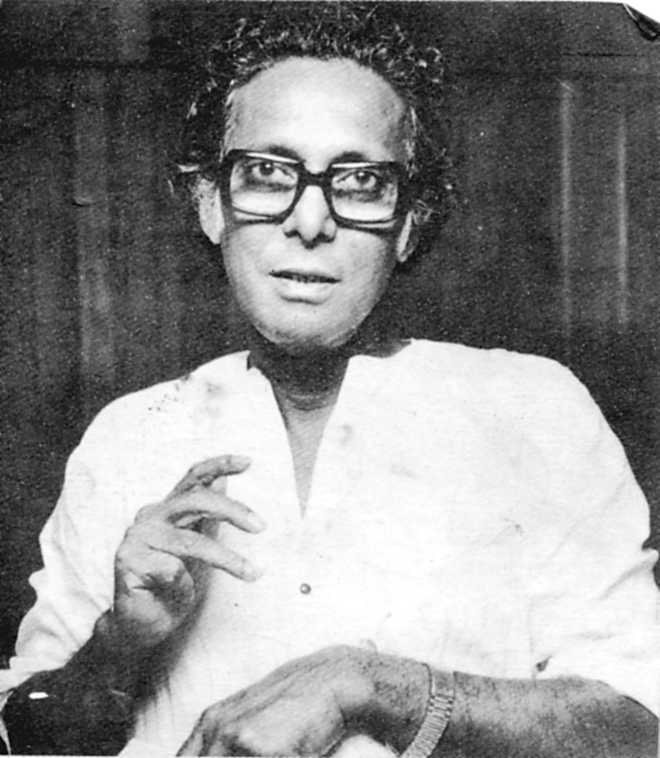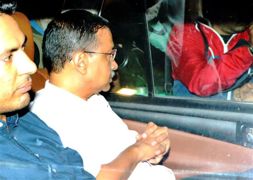
Film icon: Mrinal Sen (1923-2018)
Saibal Chatterjee
Film critic
Mrinal Sen, part of an iconic Bengali cinema trinity that he constituted with illustrious contemporaries Satyajit Ray and Ritwik Ghatak, made his last film, Amaar Bhubon (This, My Land), a decade and a half before he breathed his last at the age of 95 in his home in Kolkata. But the maverick writer-director’s formidable body of work — 27 features, five documentaries and 14 short films — still inspires younger Indian filmmakers, especially those who believe that cinema is more than just a medium of escapist entertainment. “The best thing about him was his humility, from which sprang a spirit of generosity,” says National Award-winning filmmaker Sekhar, a representative of a generation after Sen’s. “Mrinalda was always willing to listen to his juniors as well as mentor them.”
Politically clued in and always in tune with his times, Sen captured the ills of the status quo and questioned the structures that resisted change. He was a genteel rebel who never failed to raise his cinematic voice when he felt the need.
In his heyday, Sen, at once an iconoclast and a humanist, was by far the most political of India’s filmmakers, frequently wading into the sensitive themes of the plight of the dispossessed, disillusionment among the youth and the many moral and ethical dilemmas of the urban middle class. His was a cinema of rage and provocation — many of his films were a call to action. All the stories that he put on the big screen were underlined by deep empathy for the disempowered and the exploited.
What elevated his cinema many notches above the ordinary was his ability to be both a chronicler and an observer without appropriating the presumptuous role of a know-all solution-giver. He was rooted in his own culture, a conscience-keeper of his city and a genial but uncompromising critic of the middle class, but in essence he was a globalist who could see humanity in a holistic manner.
One of Sen’s early feature films, Neel Akasher Neechey (Under the Blue Sky), adapted from a story by Hindi writer Mahadevi Verma, revealed his internationalist vision, his empathy with the underdog and his political leanings. The film tells the story of a Chinese silk hawker selling his wares on the streets of Calcutta and of his growing bond with a Bengali homemaker. Set in the 1930s, when the Raj was on its last legs and imperialist Japan was launching attacks on China, Neel Akasher Neechey had obvious political overtones. It was the first film in post-independent India to be banned by the government.
Like many of the characters in his cinematic masterpieces, Sen was an agent provocateur, directing sharp barbs at the shibboleths driving a top-down approach to understanding the inequities inherent in Bengali, and by extension Indian, society. The social class that he himself belonged to was his favourite target, notably in films like Kharij (The Case is Closed, 1982), in which the death of a servant boy by asphyxiation unsettles a bourgeois Kolkata couple, and Ek Din Pratidin (And Quiet Rolls the Dawn, 1979), the story of a family thrown into disarray when a working daughter fails to return from work one evening.
Sen also often went beyond his immediate milieu to probe the hardships faced by the subaltern classes. Mrigaya (The Royal Hunt, 1976), for instance, narrated a tale that looked at the effects of imperial rule on the lives of the simple tribal people of the jungles of central India. The film viewed the fraught relationship between a colonial ruler and an untamable young hunter (played by debutant Mithun Chakraborty) not through an elitist prism, but from the standpoint of the subjugated tribal population. The performance fetched Mithun a National Award.
In Parashuram (The Man with the Axe, 1978), featuring another National Award-winning lead performance, this time by Arun Mukherjee, the protagonist is a rural migrant who shares a shelter with a beggar in a graveyard. Under the film’s spotlight is the crushing loneliness and unbearably subhuman existence of those that live on the fringes of a metropolis.
By the time Sen made Mrigaya, he had already been making films for over two decades, a period during which he had established himself as one of the foremost cinematic voices articulating concerns about the distortions that affected the power dynamics in a newly independent nation. He revelled in challenged the established order.
Mrigaya had been preceded by Sen’s highly political, experimental Calcutta trilogy — Interview (1970), Calcutta 71 (1972) and Padatik (The Guerrilla Fighter, 1973). The film that followed the trilogy, Chorus (1974), was not only trenchantly political but also continued Sen’s mixing of unbridled stylisation with cinema verite- style neo-realism.
Sen debuted in 1955 with Raat Bhore (1955). The cast of the film featured Uttam Kumar before the actor became Bengali cinema’s biggest superstar. This was the only time he cast Uttam Kumar in a film, but his association with the other major Bengali male star, Soumitra Chatterjee, known the world over as Satyajit Ray’s alter ego, was far more sustained. Sen first cast Soumitra in 1961’s Punascha (Over Again) and thereafter in Protinidhi (The Representative, 1964), Akash Kusum (Up in the Clouds, 1965) and Mahaprithibi (World Within, World Without, 1991).
Among Sen’s most acclaimed films was Akaaler Sandhaney (In Search of Famine, 1980), about a film crew that arrives in a village to make a movie about the Great Bengal Famine of 1980, a man-made calamity precipitated by World War II. As the work progresses, the recreation of the past begins to overlap with the present.
Although his roots were firmly in Calcutta, Sen often moved beyond the boundaries of Bengal and its language in search of creative inspiration, yet another proof of his capacity to embrace varied cultural impulses. He made six Hindi-language films — Bhuvan Shome (Mr Shome, 1969), Ek Adhuri Kahani (An Unfinished Story, 1971), Khandhar (The Ruins, 1983), Genesis (1986) and Ek Din Achanak (Suddenly One Day, 1989), besides Mrigaya. He also made a film each in Telugu (Oka Oori Katha, based on a Munshi Premchand story), and in Odia (Matira Manisha).



























